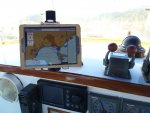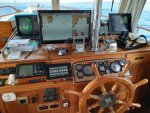vas
Well-Known Member
Mike,In my quest to find the cheapest plotter, I managed to bag/buy one of the new Raspberry Pi Zero 2Ws
They have just been released and are already sold out.
The Raspberry Pi Zero 2W is a "drop in" replacement for the old Raspberry Pi Zero and is between 4 to 6 times faster than the old model.
But, disappointingly, they don't have much RAM which makes them slower than they could have been if they had more RAM.
That said, they retail at £13.99 inc VAT.
The board incorporates a quad-core 64-bit Arm Cortex-A53 CPU, clocked at 1GHz and has USB and HDMI connectors.
Very low power with WiFi and Bluetooth interfaces on board.
As usual, it runs the Raspbian/Raspberry Pi Operating system which is a derivative of Debian Linux.
I was disappointed that it doesn't yet run my favourite Manjaro operating system that I use on all my other devices (the Raspberry Pi 4 does run Manjaro - 64 bit)
Here is a pic of the Raspberry Pi Zero 2W beside a pen to show just how small it is.
View attachment 125478
And this time, I treated it to a case:-
View attachment 125479
as you don't tend to zoom in and out all the time (and that's where CPU is mostly needed to scale and render new screens) I'd say that the above is acceptable and quite similar (on the low side...) rendering speed to a 15-20yo plotter
consumption is minimal, issue and the main reason we mostly use dedicated plotters under the sun, is the sun
doesn't look to be a big enough market for sun viewable, IP60lot 10-15in screens for the companies to invest and built something decent




